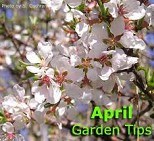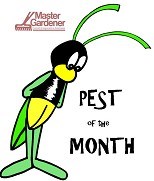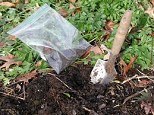 The CCEFM master gardeners plan and create a large exhibit annually in the Cooperative Extension building at Fonda Fair.
 A CCE master gardener is a teacher. Sometimes it is one-on-one and ...
 Sometimes it is a group of youth in a school or at Fonda Fair...
 And sometimes it is in classroom before a large group of people.
 CCEFM master gardeners hold a plant sale annually and dispense information about selection, planting and care of plants they sell.
|
Posted 6/12/2013
 Have the Best Annuals Ever by Following These Steps:
- Prepare the soil by cleaning out all the weeds and adding organic matter.
- Purchase annuals without flowers so that you can enjoy the blooms longer. Choose shorter bushy plants because the larger ones are more established already and may not transplant as well. If you do buy plants that have flowers already, pinch them off to encourage the plant to develop good roots first. Pinching out the first flowers will also result in bushier plants.
- A dark green color is generally a good indicator of a strong healthy plant. (Make sure that they are not light colored or yellowing. Nor should they have brown patches)
- Plant to the depth they were in the six packs and water them in thoroughly. Go back the next day and water again. Do not rush to plant them outside, wait until the night time temperatures are in the 50Fs. Remember that our last frost date in Fulton County is around the last week in May. Cool weather annuals such as alyssum and pansies can be set out earlier but impatiens will sulk if put out too soon and they may not recover.
- Keep up with watering, plants usually need about one inch of water a week but those in containers may need to be watered daily or even more than once a day.
- In early summer as the plants start forming flower buds begin a fertilizer program using a balanced formula such as 10-10-10. Read the label and apply as the manufacturer suggests throughout the summer and early fall. If you have some annuals that are slow to flower use a formula such as a 15-30-15 to stimulate flower production.
- In midsummer annuals with lots of tiny flowers such as alyssum start to look a little ragged and they will benefit from being cut back by a third to a half. Use this technique for alyssum, coreopsis, bachelor’s button, snapdragons and sweet William. Give them a dose of liquid fertilizer and they will set new buds very quickly. If your petunias are starting to get leggy with blooms just at the ends try cutting them back by half, they will also set out new growth and flowers and you will have a more compact plant full of flowers in no time.
- Deadhead your plants. Although there are annuals that are self-cleaning (begonias and calibrachoas for example) most will bloom better if you take off the dead flowers regularly. Pinch by hand or use sharp scissors or pruners and remove all the stem to keep the plant looking tidy.
- Towards the end of summer let some of your plants go to seed. Cut off the dead zinnia, marigold and gazania flowers and store them in a paper bag to reseed next year. If they are hybrid plants they may not come true to the parent but flowers are welcome in all colors and sizes – and the butterflies love them. Let the seeds of cosmos fall to the ground where they will sprout next year.
More Articles
|

The Cornell Cooperative Extension Master Gardener Program provides direct support for home gardeners by answering questions on the phone, email, and at events, teaching classes, and identifying insects. These volunteers stay current on horticultural topics.

Tip #1:
Consider planting flowers which may be dried for winter arrangements. Some of the best are strawflower, statice, celosia, and globe amaranth.
Tip #2:
Do not restrict yourself to buying plants in bloom. Petunias that bloom in the pack are often rootbound or overgrown and, after planting, will actually be set back and cease to bloom for about a month. Plants without blossoms will actually bloom sooner and will grow better as well.
Tip #3:
To extend the blooming period of gladiolus, plant early, middle and late season selections each week until the middle of June. Choose a sunny location and plant the corms four to six inches deep and six to eight inches apart.
Tip #4:
When chrysanthemums show signs of life, dig up and divide large plants. Discard woody portions and replant divisions 12 to 15 inches apart.
Tip #5:
Cut flower stalks back to the ground on daffodils, hyacinths, and other spring flowering bulbs as the flowers fade. Do not cut the foliage until it dies naturally. The leaves are necessary to produce strong bulbs capable of reflowering.
Tip #6:
The last Friday in April is National Arbor Day. Plant a tree, or support an organization which does.
Tip #7:
Prune spring blooming shrubs such as forsythia and spirea after they have completed flowering.
Do you have a gardening question for the Master Gardener in Fulton or Montgomery Counties?
Send an email! A trained volunteer master gardener will get back to you as soon as possible.
mastergardenerccefm@cornell.edu
You may also leave a message on their voicemail:
518-853-2135

It's time to scout for Japanese beetles. Evidence suggests that adult beetles are attracted to previously damaged leaves. Therefore reducing feeding damage now can result in less feeding damage in the future.
Japanese beetle adults are one quarter to one half inch long with copper colored wing covers and a shiny metallic green head. Kind of attractive in a buggy sort of way. A key characteristic is prominent white tufts of hair along their sides.
They also have the munchies for your favorite rose, linden, grape, raspberry and some 350 different plants. They generally do not feed on dogwood, forsythia, holly, lilac, evergreens and hosta. To view more information on identifying Japanese beatles and how to control/get rid of them view the article below.
 Download File Download File
|





